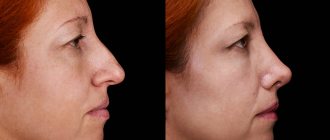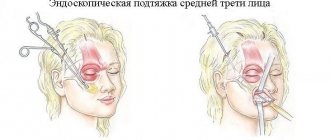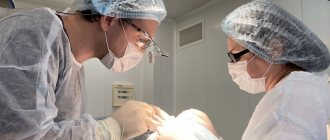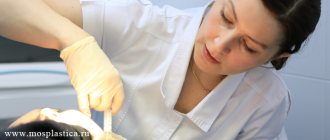Rehabilitation
A clear advantage of endoscopic abdominoplasty is a short rehabilitation period. The patient remains in the clinic for only a day. On the first day, a drainage is installed - a small tube through which the wound contents are drained. Drainage is a painless procedure, but effective from a preventive point of view. It prevents the appearance of seromas, hematomas, and wound suppuration.
A day later, the drainage is removed, the patient is bandaged and sent home. The first days you need to lead a calm lifestyle, eat light food. During this time, mild pain and discomfort may occur.
The primary rehabilitation period after endoscopic abdominoplasty is 2 weeks.
Strict restrictions are imposed during this period. You cannot play sports, you need to limit general physical activity, especially not strain your abdominal muscles. If you have a small child, you do not need to carry him in your arms, try not to lift him - entrust this to someone close to you. The same applies to lifting bags and other heavy objects.
The second limitation is the refusal of any procedures that stimulate swelling. The first two weeks after endoscopic abdominoplasty you cannot visit the bathhouse or sauna. Also, you don’t need to eat a lot of salty foods or drink at night. Salt retains water in the body, and in the first time after surgery, the main task is to prevent the occurrence of a hematoma. Therefore, unnecessary stimulating factors (warming up, drinking plenty of fluids) can aggravate the situation.
The result after endoscopic abdominoplasty will be noticeable immediately. Traces of punctures through which instruments and an endoscope were inserted will become almost invisible. If you are very picky about your appearance, you can do several laser skin treatment procedures, then your stomach after endoscopic abdominoplasty will look just perfect. The external manifestations of the operation will disappear.
Video
Cost of endoscopic abdominoplasty
| Name | Price |
| Endoscopic abdominoplasty | 120,000 rub. |
| Primary appointment (examination, consultation) with a plastic surgeon | FOR FREE |
Preparation for abdominoplasty
In women, tummy tuck surgery is performed in the middle of the menstrual cycle. The doctor prescribes a diet 2-3 weeks in advance. Her goal is to lose weight and prepare the intestines for surgical procedures.
As part of the diet, simple carbohydrates and foods that increase gas formation are minimized or excluded from the menu - sugar, flour dishes, canned food, sausages, soda, legumes, cabbage, etc. To reduce the volume of the intestines, eat 4-6 times a day in portions volume about a glass. Drink about 2 liters of water during the day. After 20 hours they try not to eat, or eat easily digestible foods - lean meat, fish, stewed vegetables, dairy products.
2 weeks before abdominoplasty, the doctor may prescribe medications that strengthen the walls of blood vessels. If a large volume of surgery is planned, a consultation with a vascular surgeon may be indicated. It is recommended to quit smoking at least a week in advance - nicotine slows down tissue healing. You should also exclude alcohol, taking anticoagulants and a number of other pharmaceuticals - they interfere with blood clotting.
In addition, the doctor may prescribe sorbents and drugs that normalize the intestinal microflora. Regular physical training is also highly desirable, corresponding to the general level of fitness and state of health (but without excessive stress). If there are no contraindications or individual intolerance, it is advisable to go to a bathhouse or sauna once a week. To improve local lymph flow, massage, LPG, and wraps are prescribed.
A light dinner is shown the night before. At night and in the morning, take sedative herbal medicines - valerian, motherwort, etc. From 0 o'clock on the day of surgery, fasting is indicated (you can drink water). In the morning, do a cleansing enema, take a hygienic shower; don't wear cosmetics. Bring compression garments, medical and personal documents with you to the clinic.
Operation
Endoscopic abdominoplasty is performed under general or epidural anesthesia using special equipment - a video-assisted endoscopic stand. All stages of the operation are carried out through 3 incisions no more than 3 cm long, made in the navel and above the pubis. Instruments and optics are inserted into the incisions, allowing you to monitor the progress of the operation on the monitor. The surgeon strengthens the muscles with durable, non-absorbable suture material. After all manipulations, the instruments are removed and the incisions are sutured with a cosmetic suture using absorbable material.
The duration of the operation is from 1 to 2 hours, depending on the complexity of the intervention and the combination of the operation with liposuction.
Rehabilitation
As a rule, there are no complications during operations and the rehabilitation period. The patient is discharged 1 day after the procedure; for 1 month it is necessary to wear compression underwear; warming procedures (bath, sauna), visiting a solarium and physical exercise on the abs are also prohibited.
First days
Prepare for discomfort in the first days! You will experience pain whenever you move your body. The stomach will become hard. Therefore, I prescribe pain medication and maximum physical rest.
Unpleasant sensations are caused by the combination of skin tension in the abdominal wall, sutures and tight compression garments. During sleep, the legs are slightly elevated to reduce tension.
On the second day, the patient begins to stand up and walk independently. The correct pose is in a half-bent position (“shrimp pose”).
At the 4-5th post-tummy tuck, the patient feels significant relief.
How long does the swelling last?
Swelling and bruising are a natural consequence of recovery after correction. Swelling persists for up to several months. To eliminate this, I recommend sleeping on your back, drinking a small amount of water and doing a light massage of the anterior abdominal wall to improve blood circulation.
Are stitches visible after abdominoplasty?
Abdominoplasty without skin tightening leaves virtually no marks. The cannula is inserted through very small punctures.
After classic plastic surgery, the seam is quite large (from hip to hip), but is very low along the bikini line.
After mini-abdominoplasty, the seam is small and, as a rule, is also localized in the place of camouflage with underwear.
Caring for sutures is an important aspect of rehabilitation. At first, you will need to change the bandages daily. You cannot get it wet, stretch it, or try to get rid of surgical sutures on your own.
Remember that suture healing is a long process (up to 1 year). A year after plastic surgery, the seam will lighten and become much less noticeable.
SCARS AFTER ABDOMINOPLASTY
Photos "Before" and "After"
See more “Before” and “After” photos
What should a beautiful belly look like?
- elastic, elastic anterior abdominal wall
- pronounced lateral and groin area - what we call the waist
- soft contours: the anterior abdominal wall is concave in the upper part, slightly convex in the lower part
- moderately pronounced muscles
- The diameter of the navel is 1.5 - 2 cm. In a vertical position, it should be in the middle between the pubic bone and the xiphoid process; in a horizontal position, the median of the navel should be located between the upper axes of the iliac bones.
Excess weight and pregnancy are two main factors that negatively affect the aesthetics of the body. In some cases, sports and diets only partially solve the problem. A stretched skin-fat apron cannot be removed either by exercise or by proper nutrition.
⇒
Advantages of endoscopic abdominoplasty
Endoscopic abdominoplasty is suitable for patients with weakened abdominal wall muscles, but who have sufficiently elastic skin in this area. This technique makes it possible to strengthen all “stretched, flabby” muscles without large and noticeable incisions. The operation is performed through an incision of no more than 3 cm. No excision of excess skin and fatty tissue is performed with this type of operation. The minimally invasive nature of the operation ensures a short rehabilitation period and the absence of large scars after surgery.
This is the main advantage of abdominoplasty.
In addition, a unique operation can be performed simultaneously with liposuction, adjusting the waist or lower back.
WHO IS ABDOMINOPLASTY FOR?
Patients with indications for abdominoplasty are people (most often women) who cannot achieve the desired effect with diet and exercise.
Abdominoplasty is indicated for women who have had a pregnancy that has caused stretching of the abdominal muscles and skin. It can also be recommended for loss of skin elasticity, which usually occurs with the acquisition of excess weight or with age. In men, abdominoplasty is sometimes indicated after excessive weight loss.
The operation is contraindicated for women planning to undergo a pregnancy in the future, since the vertical abdominal muscles, tightened through the operation, can stretch again during pregnancy.
Abdominoplasty is not recommended for people planning to lose weight, since in this case the result achieved through the operation can be significantly spoiled.
What tests will be required before abdominoplasty?
Before the operation, the patient must undergo a complete medical examination to identify general health and possible contraindications. The list of standard preoperative studies includes:
- General blood analysis.
- Biochemical blood test (total protein, ALT, AST, total bilirubin, creatinine, urea, glucose, electrolytes).
- General urine analysis.
- Analysis for blood group and Rh factor.
- Blood test for HIV, syphilis and hepatitis B and C (HBsAg, HCV).
- Blood test for coagulogram (blood clotting).
- ECG.
- Fluorography.
The therapist gives a conclusion about readiness for surgery. To prepare for anesthesia, you will need to visit an anesthesiologist.
Price
150 000 ₽
Operation: abdominoplasty
What is included in this price:
All necessary tests
Preoperative preparation
Stay in a three-bed room in a hospital (amenities - TV, shower, toilet, air conditioning). It is also possible to stay in single or double rooms for an additional fee.
Three meals a day
Inhalation anesthesia is non-toxic and safe: imported drugs are used for anesthesia. The active effect of anesthesia stops 30 minutes after surgery. The patient comes to his senses. Residual effects - mild drowsiness, which can last up to 2 hours
Postoperative period: dressings, systems, consultations
Extract with written recommendations from the doctor
Consultation with a doctor within one year after surgery









